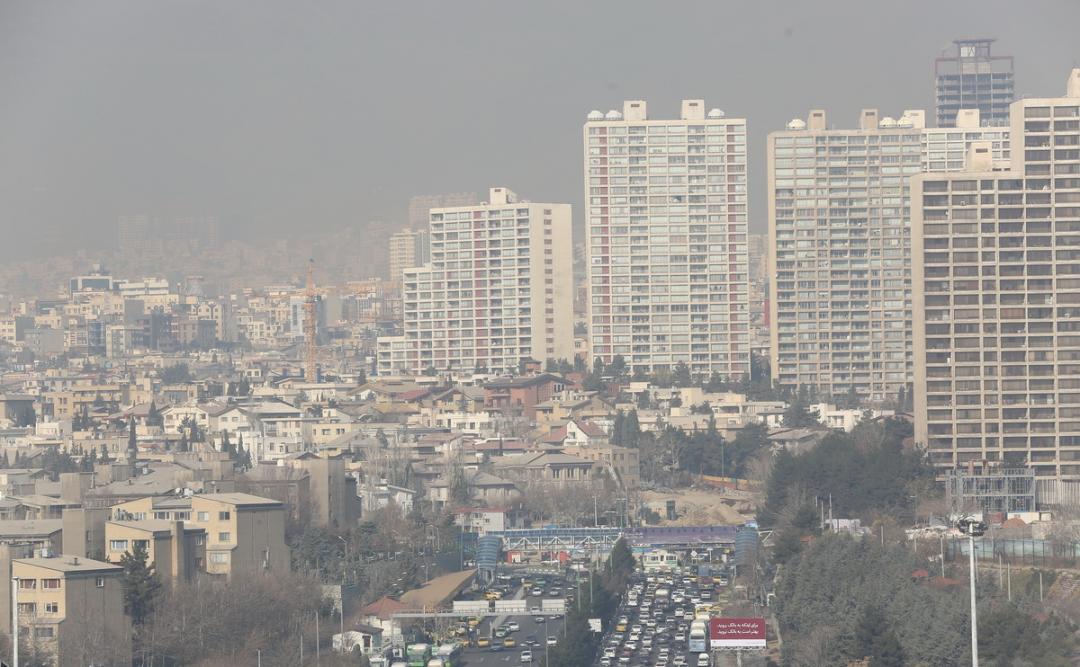Tehran residents snapped back to reality on Tuesday when they noticed a palpable drop in air quality following two surprisingly pollution-free days.
While the drop was expected, it reminded the more than 10 million people living in the overcrowded capital that the air quality in Tehran by default is bad, with intermittent clean days.
After more than three weeks of non-stop toxic pollution and thick smog, air quality began to improve on Friday and reached an exceptionally low index of 43 on Monday — the lowest it has been for months.
But things took a turn for the worst on Tuesday, and as of Wednesday morning, Tehran’s air quality was 78 — 22 points off the minimum threshold for “unhealthy” air quality based on the World Health Organization standards.
According to experts, Tehran’s road network has place for 2 million vehicles; less than half the number that presently crisscross the streets of the permanently polluted city. And their numbers are growing at terrible speed, mostly with domestically-made gas-guzzlers.
Furthermore, the city’s woefully underdeveloped public transportation has long been the subject of criticism because it has failed to keep pace with the population boom, which has quadrupled in less than four decades.
However, Tehran Mayor Mohammad Baqer Qalibaf dismisses claims that his office is to blame for the sorry state of public transportation, instead shifting the blame on past and present governments which did not (and have not) provided the municipality with funds needed to renovate the aging fleet of buses and expand the network.
Clunkers way past their acceptable service life clutter city streets and are said to be responsible for a staggering 80% of Tehran’s pollution.
What’s interesting is that the taxis, which hardly account for 2% of the public transportation fleet, contribute a whopping 18% to the air pollution.
Qalibaf has also drawn the ire of city councilors and environmentalists for allowing unrestrained construction of high-rises in and around the metropolis that once was the pride of the nation with a population of three million (1979). It has been established beyond an element of doubt that the hundreds of towers and skyscrapers, especially along the western flank, block the winds of pivotal importance to drive away the dirty air and smog.
Buildings exert a powerful frictional drag on air moving over and around them. This creates turbulence and can cause rapid and abrupt changes in wind direction and speed.
The main reason behind Tehran’s two pollution-free days was the strong winds that probably miraculously weaved their way through the maze of steel and concrete towers that have understandably given Tehran a bad name.
“Wind speeds averaged nine meters per second on Sunday and Monday, but now it is barely 3 m/s, which explains the rise in pollutant levels,” Majid Azadi, a project leader at the Atmospheric Science and Meteorological Research Center in Tehran, told IRNA.
Accounting for atmospheric changes, Tehran’s air quality is expected to remain low and may even deteriorate further until Friday weekend. “However, things should improve come Saturday,” he said.
Experts are of the opinion that years of negligence and mismanagement has left Tehran in dire straits.
Quite literally, little about development in the chaotic capital is or has been sustainable. Tehran is located in a valley surrounded by towering mountains which act as natural barriers against winds and enhance the strength of temperature inversion — when cold air underlies warmer air during winter, trapping pollutants within city limits that form thick smog.
Maybe if past and present city and environmental officials along with urban planners had some vision in issuing construction permits, given the challenges posed by the city’s topography, Tehran residents would not now be filling their lungs with more than their daily quota of toxic air.


